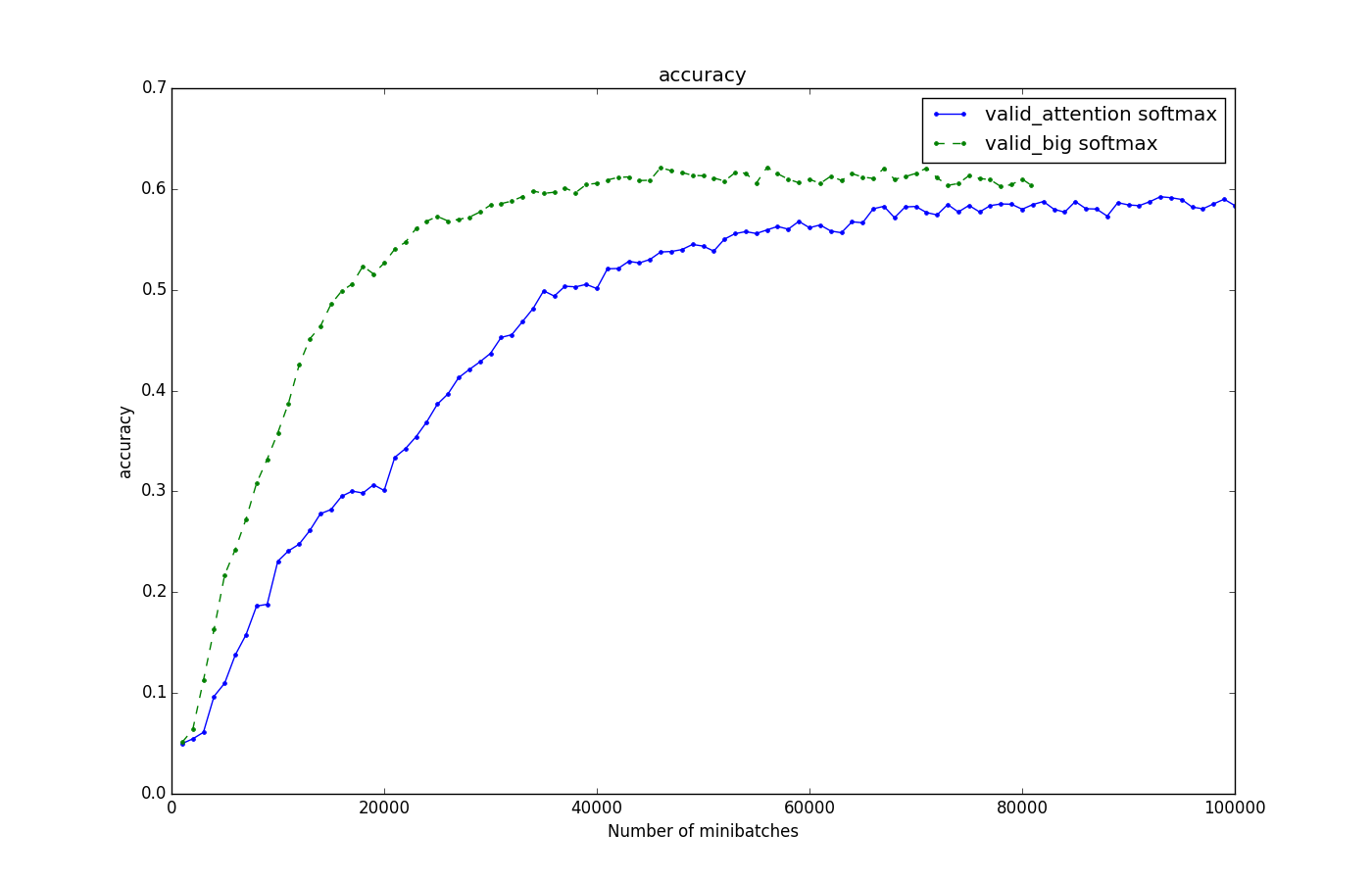Lasagne/Theano implementation of the attentive reader of the following paper from Google DeepMind.
Teaching Machines to Read and Comprehend,
Karl Moritz Hermann, Tomáš Kočiský, Edward Grefenstette, Lasse Espeholt, Will Kay, Mustafa Suleyman, Phil Blunsom,
NIPS 2015
Our attentive reader architecture is fast to train and reaches 62.1% accuracy in only 4-5 hours (green curve below). Learning starts straight away, the plateau phase is very short.
-
Clone the repository
-
Follow the instructions steps of https://github.com/thomasmesnard/DeepMind-Teaching-Machines-to-Read-and-Comprehend to download and process the data.
-
Create a $DATA_PATH env variable with the path of the dataset folder. More precisely the dataset folder should have the following structure: $DATA_PATH > deepmind-qa > cnn > questions and stats folder
-
Go to the cloned repository and run
python main.py -s config/big/attention_softmax.py.
It should take about 4-5 hours to reach a validation performance of 62% on a Titan X.
If the attentive reader mechanism is the same, there are several architecture differences compared to Deepmind's model. In particular:
- we use GRUs instead of LSTMS,
- we don't use dropout,
- we use ADAM as gradient descent rule,
- a single small layer of GRUs (256 units),
- no bidirectional layer,
- no skip connections,
- no weight noise,
- vocabulary is limited to 30K words.
The config file of our architecture: https://github.com/adbrebs/rnn_reader/blob/master/config/big/attention_softmax.py
- Theano
- Lasagne
- Fuel (for the data pipeline)
- Raccoon (to monitor training): NEW: you need a earlier version: git checkout 5174d65e69f7cf7a7b8fd26db6b6eab9a48d0339
Our code relies on the fuel data extensions developed by Thomas Mesnard, Alex Auvolat and Étienne Simon: https://github.com/thomasmesnard/DeepMind-Teaching-Machines-to-Read-and-Comprehend
